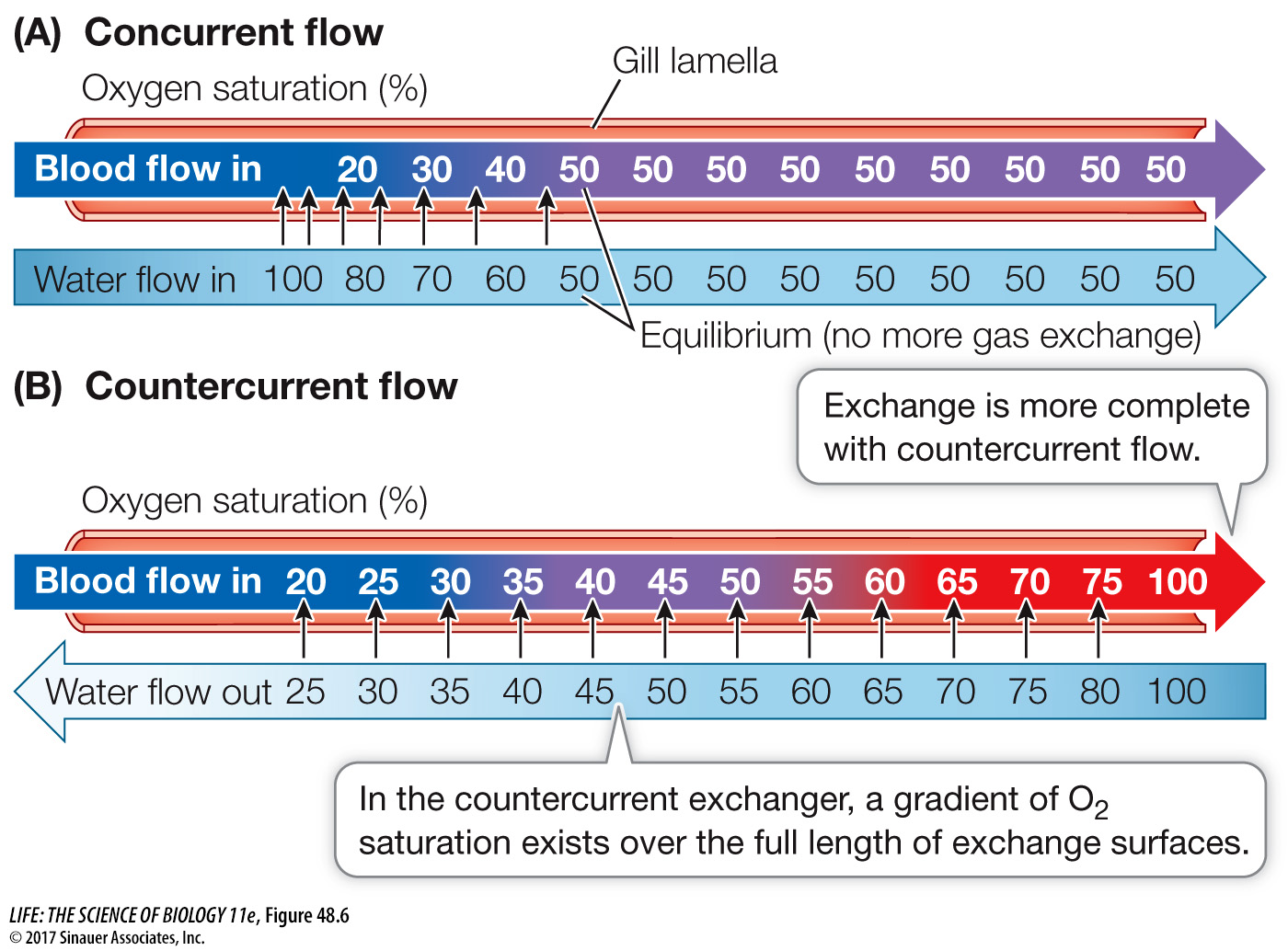
Figure 48.6 Countercurrent Flow Enables More Complete Exchange In these models of concurrent and countercurrent gas exchange, the numbers represent the O2 saturation percentages of blood and water. (A) In a concurrent exchanger, the saturation percentages of blood and water reach equilibrium halfway across the exchange surface. (B) A countercurrent exchanger allows more complete gas exchange because the water always has a higher PO2 than the blood; thus a gradient of PO2 supports diffusion of O2 into the blood across the entire length of the exchanger.